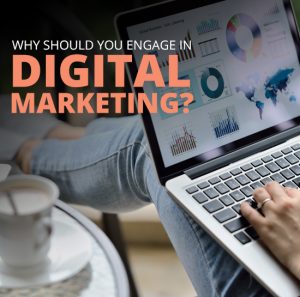How NOT to Make Your Promotional Product Fail
Online, you can find thousands of examples of marketing campaign fails, product fails and promotional product fails. They are used for laughs and consequently, these fails have a horrible effect on the brand involved. As I am considering a promotional product, I have investigated what I need to consider before purchasing a batch of them.
In this blog, I share a checklist of things to consider regarding promotional products, so that you can learn from other brands’ mistakes and choose the appropriate promotional product for your brand’s intentions.

An example of a promotional product fail
First, let me give you an example of a promotional product fail, so that you have an idea of what can happen if you have not thought through your promotional product.
Bureau for At-Risk Youth ran an anti-drug campaign by printing and distributing “Too Cool to Do Drugs” pencils to students. After a bit of sharpening, however, these anti-drug pencils became drug-pushing pencils. They read “Cool to Do Drugs” and eventually “Do Drugs”.

Seeing the obvious mistake, the group issued a recall. The reissued pencils have the slogan written in the opposite direction. After sharpening, the final message reads, “Too Cool,” instead of “Do Drugs.”
The value of a promotional product
Promotional Products Work has listed several scientific studies about the value of promotional products. Here is an overview of some of the results of these studies:
- Recipients of promotional products have a significantly more positive opinion of a business: more positive overall image, more positive perception of the business, higher likelihood of recommending the business as well as a higher likelihood of patronizing the business.
- 71 percent of business people reported having received a promotional product in the last 12 months. Of that group, 76.1 percent could recall the advertiser’s name, 52 percent did business with the advertiser after receiving the promotional product and 52.1 percent reported their impression of the advertiser was more favorable after receiving the item.
- Promotional products, used as dimensionals in direct mail solicitations, can boost response rates by up to 75 percent.
- Customers reorder faster and more often when promotional products are used instead of coupons. Customers receiving promotional products reordered up to 18 percent sooner than those who received coupons and up to 13 percent sooner than those who received no promotion.
If done correctly, promotional products can thus help you increase sales. Let us review the things to consider when ordering promotional products and the things you should NOT do.
10 steps to a successful promotional products strategy
Constructing and implementing an active promotional product campaign is a key way to build a better brand identity, and boost your company’s performance in your industry. A1 Promotional Products offers you ten steps that guide you through the process.
1. Define your purpose
Start by making a document that details the purpose, budget, and ideas of the product you will be promoting. Branding, customer outreach, and success all come from a strong sense of communication and consistency. Being prepared in advance is therefore highly suggested. If your document can keep everyone on the right track, you have a higher chance of succeeding in your promotional product campaign.
2. Research, research, research
Having a good understanding of how similar products to yours are currently performing in your industry is of utmost importance when beginning to construct your campaign. You need to speak directly to potential customers, do your market research, and test your product on a small audience before making any drastic or permanent choices about your campaign. The more research you have access to, the more you can be positive that the choices you are making are ideal for the goals of your promotional product campaign.
3. Look at your competitors’ promotional products
When building a campaign from the ground up, it can be useful to look toward sources of inspiration. Educate yourself by identifying the primary competitors you have to compete with within your industry: what has and has not worked for similar products in the past? Find out what they have yet to offer to your target audience and capitalize on the opportunity to be the first brand to offer that.
4. Never order too much
When running a promotional product campaign, you need to be able to get the word about your brand’s products/services out there in a financially responsible way. One of the biggest mistakes companies make is overestimating the amount of promotional product required to make people aware of their business. It is always better to order too little and have to wait for a new shipment than to waste thousands of potential marketing dollars on a promotional product that simply fails to reach expectations or demands.
5. Always consider the customer
Having a thorough understanding of what your customer currently desires from your industry is the key to running a successful promotional product campaign. Get out there and communicate with your consumer base. You will find valuable information that will lead you to successful business practices, and you will begin making a reputation for your brand as one that values the needs and ideas of its consumer base. Before making any choice about your promotional product marketing campaign, ask yourself: “What does this do for my target audience?”
6. Branding is everything
Even if you offer amazing products that you know your consumer base is craving, your efforts are likely to fail if you do not have a strong brand identity. For more information about how to create a strong brand identity, please read my blog called “Strong Corporate Branding.”
7. Keep offerings valuable
It is easy for people to believe that your products/services are valuable in the short-run. Nevertheless, a lasting impression of your company forming in their mind is reserved for when you can clearly demonstrate that the value you provide lasts for a long time. Concentrate on promoting the most useful and valuable products your company has to offer during your campaign and you will begin to have your audience associating your company’s name with stellar products.
8. Strive for feedback from your customers
After you have launched your campaign, and you have had a decent amount of interaction from your target consumer base, it is time to start gathering important feedback from your audience. Obtaining this information will be one of the most important steps when guiding your campaign towards a successful outcome. Offering valuable incentives such as discounts can be a great way to get participants for satisfaction surveys.
9. Analyze your results
Once your company has gained many hard data on the reaction to the promotional product campaign, it is time to analyze the data. Doing so will allow you to see the current strengths and weaknesses of your efforts.
10. Adjust accordingly and carry on
Now is the time to readjust your campaign. By switching things up in subtle ways, you can make the successful interaction you have with customers skyrocket during your promotional product campaign. Keep in mind that adjusting your efforts is not a one-time thing. Successful campaigns are the result of continually breaking down data and adjusting the campaigns. However, it is important that you always make sure your branding stays consistent, so that your target consumer base does not become confused about the goals of your company’s efforts.

5 things to consider when placing your logo on a promotional product
To make things practical, here are five questions listed by Josh Frey that you need to ask yourself to determine whether the product is right for your brand. I think these questions relate to step 2, 3 and 5 from the section above.
1. Does the product actually work?
This is one of the biggest factors to take into consideration. If a product fails to live up to its expectations, then it can have a substantial impact on the corporate brand. Remember, every interaction with your business is part of the experience in doing business with your company.
2. Does the product represent the values of the company?
If a company boasts about its family-friendly values, it may be a bad idea for a company to put its logo on products that are oriented toward adults. Consider other values or cultural elements of the company when choosing a marketing or promotional product.
3. Is the product safe?
Consider the use of the product and your audience. Some items may be small and hazardous to small children. Other products may have sharp corners that can cut or scratch the user or equipment. It is a good idea to think about safety and the “what-ifs?” prior to printing your company name on any promotional product.
4. Is the product practical?
Ask yourself whether you would use the product. If the response is “no” (unless it is a gender-specific or specialized product), it may not be a product that you should put your logo on. Remember, your company logo will be on that product forever and you rarely have the ability to get the product back once distributed.
5. Is the item similar to promotional items of competitors?
This directly relates to step 3. Do the research on how competitors address your target audience and choose a niche. Your promotional item should stand apart and make an impact. Do what you can to make the recipient’s experience unique and your return on investment will be well worth it.

10 promotional products that are sure to fail
Quality Logo Products lists 10 types of products you want to stay clear of when considering promotional products.
1. Most personal hygiene products
Toothbrushes and hairbrushes are usually okay, but hygiene products can take a serious wrong turn if a promoter looks to the bathroom for product inspiration. Items like toilet paper and feminine hygiene products should remain off-limits. While some people may appreciate the vulgarity, most will simply find toilet humor to be a disgusting association.
2. Shape-shifting products
Even though printing a logo on a balloon can be good in some cases, just remember that the image may become distorted and result in something unflattering once it is inflated. Similarly, products that change shape or wear away (like soap) will cause the image to slowly erode and fade, which alters the text and the company message.
3. Religious artifacts
Promotional products printed on religious items can alienate any non-believers included in the target market. In addition, a company logo on a Jesus statue may incur the wrath of entire demographics! When it comes to religion, many people leave no room for anything but reverence in their approach to these artifacts and may take deep offense to their use in anything but worship. In the interest of appeasing the masses, it is usually best to refrain from attempting to brand a company on anything of this nature.
4. Items associated with political controversies
There are plenty of divisive issues in modern politics, but these are terrible associations for marketing campaigns. Think very carefully before choosing a side on any issue. In the professional world, it is usually best to leave the jokes to the comedians.
5. Dangerous objects
Picture this: your company’s promotional product somehow hurt a child and put him in the hospital. Now the company’s name is all over the news, but that is not a good thing! It is easy to see the logic in avoiding dangerous promotional items; if a product with your company’s name on it causes harm to someone, it is going to taint your business name whether you are legally liable for it or not.
6. Malfunctioning/annoying devices
If your business chooses a product that does not work or annoys people, people will forever associate your company with words like “irritating” and “unreliable.” It is possible to turn people off to a business by offering a promotional product that breaks or refuses to work properly. Make sure you are choosing high-quality items that serve a purpose!
7. Disposable products
When a promotional product is destined for disposal, the name and message of that company is gone and forgotten. Personalizing disposable items means that very shortly your business name will be hanging out with empty paper towel rolls. Unfortunately, the memory of that great business will be gone by trash day.
8. Puny products
Do not make people work too hard to read the logo or company info. It is not fun and most people simply are not interested in investing the energy. Sometimes bigger actually is better; when it comes to printing information clearly, do not skip on readability for cleverness because it is not worth sacrificing the message.
9. Commodities that might be considered “in poor taste”
Everyone has a different sense of humor, and what some might find hilarious others will find repulsive. Do not wait until a batch of promo items has been shipped to gauge the audience’s sense of humor. Offensive promotional products will be deemed as poor judgment on the part of the business, and it will eventually call into question whether or not the business can be trusted.
10. Items that contradict the company’s message
It can confuse people when your promotional item seems at odds with the purpose of the business. It may not be the best idea to advertise a bakery on a logo gym bag or an automotive repair shop on a bicycle.
You now know what to do when you consider handing out promotional products. Do not become a laughingstock, but make sure to increase sales with your promotional products!
Business & Finance Articles on Business 2 Community(38)







